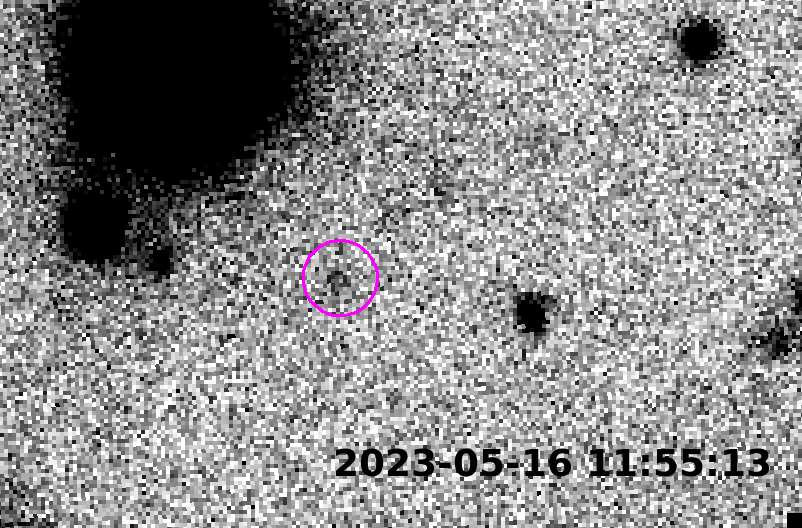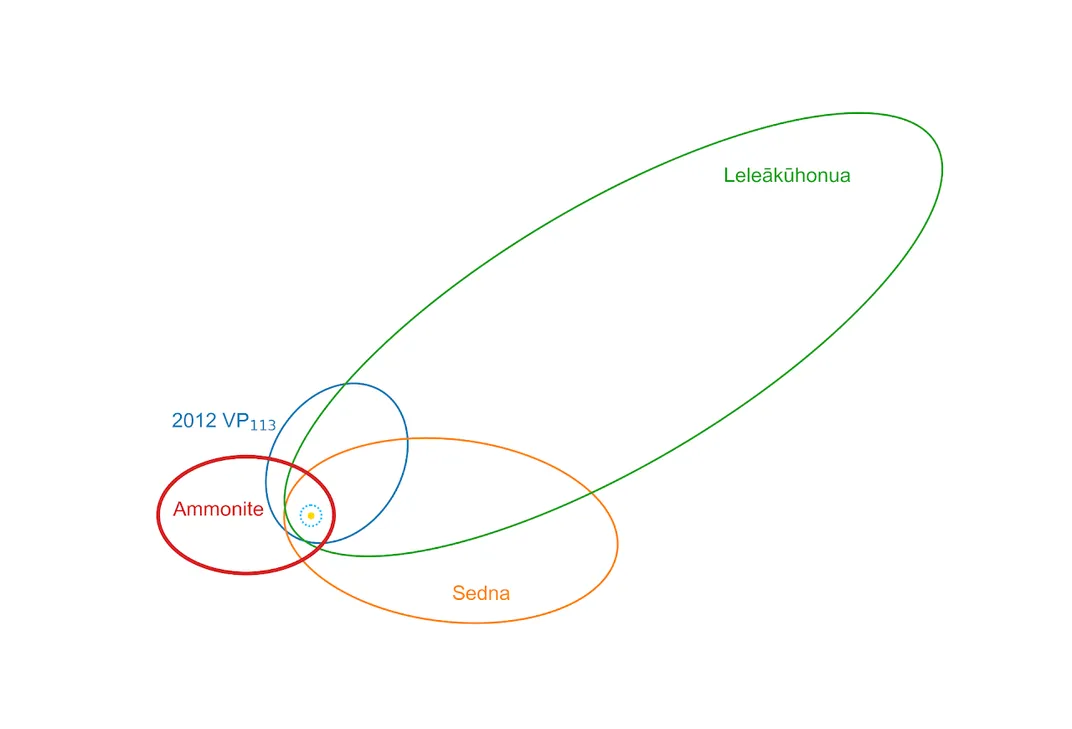Astronomers Discover ‘Ammonite,’ a Mysterious Distant Object That Could Shed Light on Our Solar System’s History
The celestial body’s unusual orbit “implies that something extraordinary occurred” in the early days of the solar system—and throws a wrench in the Planet Nine idea

Astronomers have just identified a new celestial body with a strange orbit that has implications for the formation of our solar system, as well as the idea that an elusive “Planet Nine” could be hiding in its outer regions.
As detailed in a study published July 14 in the journal Nature Astronomy, the object—designated 2023 KQ14 while awaiting an official name from the International Astronomical Union—is one of only four sednoids known to astronomers. Sednoids are trans-Neptunian objects (small bodies that orbit the sun beyond Neptune) with elliptical orbits that keep them very far from the star, even at perihelion, or the closest point to the sun in their orbit. The first sednoid to be discovered, found in 2003, is called Sedna.
Nicknamed Ammonite, the recently discovered sednoid has a perihelion of 66 astronomical units (AU). One AU is the approximate distance between the Earth and sun—around 93 million miles. Ammonite’s semi-major axis, or its average distance from the sun, is 252 AU.
Fun fact: Largest trans-Neptunian objects
The largest trans-Neptunian objects are also considered dwarf planets—Eris, Pluto, Haumea and Makemake. The other officially recognized dwarf planet, Ceres, is located in the main asteroid belt.
Objects with orbits like Ammonite’s “are challenging to observe, and thus their detections are still rare, yet they play a crucial role in constraining models of solar system formation,” the researchers write in the paper.
“The significance of discovering Ammonite goes far beyond adding one more distant object,” Shiang-Yu Wang, the study’s corresponding author and a research fellow at the Academia Sinica Institute of Astronomy and Astrophysics in Taiwan, says in a statement. “Ammonite’s orbit tells us that something sculpted the outer solar system very early on. Whether it was a passing star or a hidden planet, this discovery brings us closer to the truth.”
Astronomers found Ammonite through Subaru Telescope observations as part of a survey project called FOSSIL (Formation of the Outer Solar System: an Icy Legacy). The team followed up the initial observations from March, May and August 2023 with more observations from the Canada-France-Hawaii Telescope in July 2024.
“It takes about a year of observing to determine whether an orbit is Sedna-like or not,” Scott Sheppard, an astronomer at the Carnegie Institution for Science, told NBC News in 2014 after co-discovering 2012 VP113, the second sednoid identified. The team from the recent study, though, was able to trace Ammonite’s orbit across 19 years by retroactively identifying it in archival data from other observatories.
Sednoids play a strong supporting role in the Planet Nine theory, which argues that a giant ninth planet, sometimes referred to as Planet X, exists in our solar system beyond Neptune. That’s because these distant objects have strangely aligned orbits that may indicate the gravitational influence of an undiscovered planet, per Gizmodo’s Passant Rabie.
Interestingly, however, Ammonite’s orbit is strikingly different from the paths of the other three known sednoids. This discrepancy “lowers the likelihood of the Planet Nine hypothesis,” study co-author Yukun Huang of the National Astronomical Observatory of Japan says in a statement.
Still, simulations suggest Ammonite more closely matched the other sednoids’ orbits around 4.2 billion years ago. “It is possible that a planet once existed in the solar system but was later ejected, causing the unusual orbits we see today,” Huang adds.

If the supposed undiscovered planet does exist, its orbit must be bigger than what scientists have previously predicted, according to the statement. More simply, the discovery of Ammonite indicates that the outer solar system is more diverse and complex than once thought.
“The presence of objects with elongated orbits and large perihelion distances” so far away, where Neptune has little gravitational influence, “implies that something extraordinary occurred during the ancient era when 2023 KQ14 formed,” study co-author Fumi Yoshida, a planetary scientist from the Chiba Institute of Technology in Japan who leads FOSSIL, says in the statement. “Understanding the orbital evolution and physical properties of these unique, distant objects is crucial for comprehending the full history of the solar system.”



